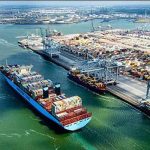Surging Chinese oil demand, a lingering war in Ukraine, record-low order book and robust crude trade flows have led to a bullish outlook for global tanker freight for the second half of 2023, despite rates declining recently ahead of holidays in the Persian Gulf, market analysts said June 30.
Recent OPEC+ supply cuts, particularly by Saudi Arabia, were not seen as a limiting factor for tanker freight gains, though market volatility could result in frequent bouts of decline and recovery, according to the analysts.
Crude oil trade flows have increased 8.5% in the first five months of 2023 to almost 900 million mt despite OPEC+ output cuts of October 2022 and April 2023, said Enrico Paglia, a Genoa-based research manager with shipping brokerage and consultancy Banchero Costa.
Global crude oil trade in May was near a record high, with the Middle East countries exporting almost 15 million mt more than the same period a year earlier, said Paglia. The Middle East has been the second biggest contributor to growth in dirty tanker demand in 2023 after the US, in terms of crude oil volumes moved, he said.
OPEC+ supply cuts were unlikely to have a lasting impact on tanker freight as seasonally rising oil demand may reduce inventories sharply in the third quarter, Ole-Rikard Hammer, Oslo-based senior analyst at Arctic Securities said.
China alone has purchased and processed a lot of crude in the first half of 2023, with its refinery runs rising 10% on the year and crude imports up 5%, Hammer said.
London-based Maritime Strategies International, or MSI, forecast the daily average spot Very Large Crude Carrier earnings at $53,800 in the July-September quarter, considering voyages to China from the US and the Persian Gulf, over 50% higher from the first quarter of 2023. MSI said that the estimated first-quarter Long Range 2 tanker earnings of $33,600/d on the Persian Gulf-Japan route may be higher by 25% in the third quarter at $41,900/d.
Rising refinery margins and strong freight rates this time of year were a clear signal of well-balanced markets and there was certainly no demand recession at this point, said Hammer.
He said that even though the Chinese economy appears to be losing momentum and its economic growth may slow in the second half of 2023, government authorities worldwide were likely to support their respective economies, which means higher oil demand.
Robust Russian supply
Russian energy exports have been sturdy despite sanctions by the US and European Union following its invasion of Ukraine. Russian crude exports rose 7% on the year in 2023 to almost 100 million mt until May, said Paglia.
India was the top crude importer from Russia with over 6.5 million mt in May, despite a 15% drop in volumes from April, while Brazil imported more than half of its diesel requirements from Russia in May, MSI’s London-based Director Tim Smith said in a report.
Russia’s oil exports were likely to be relatively high even after it delivers on its voluntary output cut, and the volumes would occupy a lot of tonnage because of complicated travel patterns and sanctions, Hammer said.
Ageing fleet
The current dirty tanker order book was pretty much empty, while full for other ship types, said Paglia.
Less than 10 million dwt of dirty tankers were expected to be delivered in 2023, about half of 2022, he said.
“The question is when it will turn negative as the order book is at a modern day low and the fleet is aging,” Arctic’s Hammer said.
In clean tankers, there have been no new orders for LR 1s, and according to Banchero Costa data, more than half the fleet was already over 15 years old.
Slow growth in tanker fleet implies that annual global refined products trade of about 800 million mt, a third of which is loaded in Asia, must mostly utilize existing ships, a move that supports freight.
Market volatility to weigh on outlook
Tanker freight outlook is bullish, but with plenty of uncertainties, said Hammer.
Daily VLCC earnings on the Persian Gulf-North Asia route that as recently as 10 days ago were over $80,000 have more than halved, according to brokers.
Unstable nature of the oil market means volatility and upside are never far away, said MSI’s Smith. The average VLCC freight was now at an eight-year high and hovering at the highest level in at least 15 years, Paglia said.
Hammer said a rebound in mobility and travel as opposed to industrial expansion was likely to be the primary driver of oil demand in 2023 that will support freight. He cautioned that more interest rate hikes passing on to consumers and businesses could weigh on the market but even then, seasonal strength in oil demand may support tanker freight.
Source : Hellenic Shipping News





